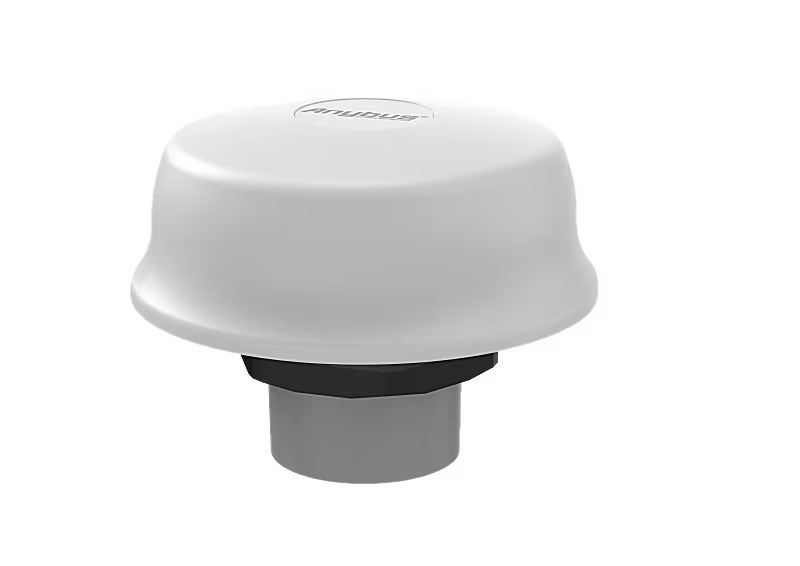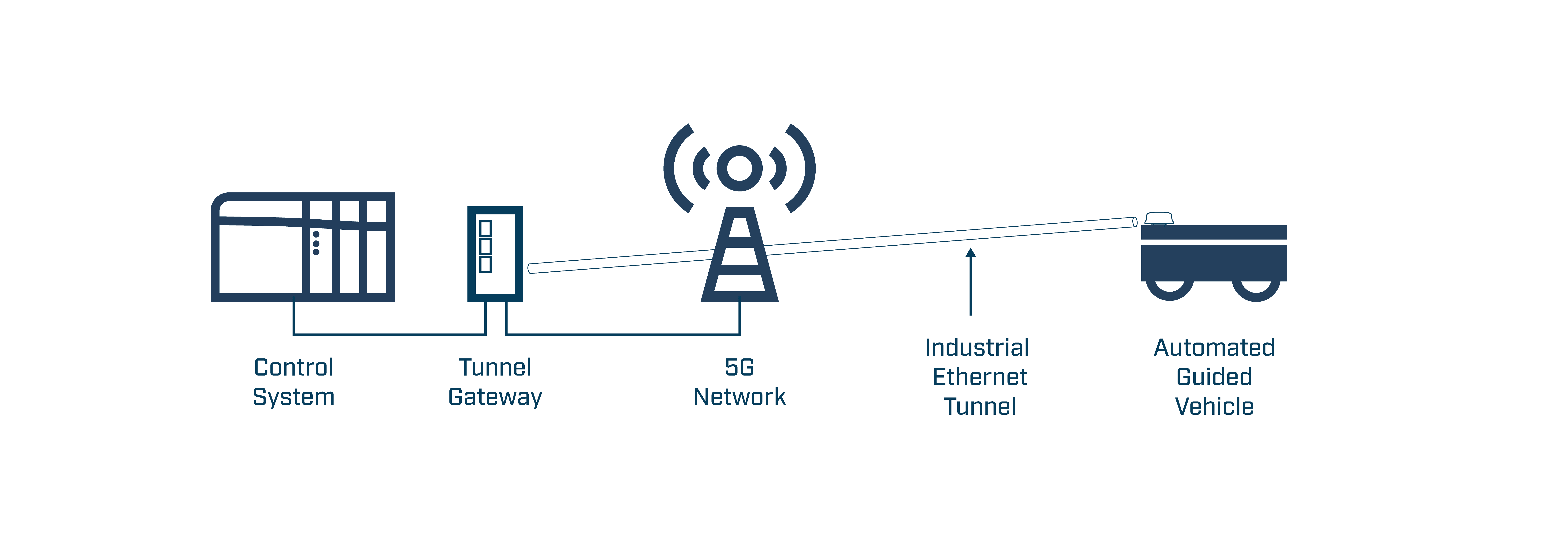The Anybus Wireless Bolt 5G and Tunnel Gateway: Built for High-Speed Demands
HMS Networks' new Anybus Wireless Bolt 5G and Anybus Tunnel Gateway are a dynamic duo that aims to boost reliability and security in the AMR and robotic manufacturing markets.
HMS Networks has released a new 5G-equipped bolt and tunnel gateway pair that will serve the autonomous mobile robot (AMR) and robotic manufacturing markets. The Anybus Wireless Bolt 5G and Anbyus Tunnel Gateway are designed to provide fast, reliable, and secure data transmission over 5G, reducing the headache associated with wireless protocols and moving objects.

HMS Networks’ Anybus Tunnel Gateway connects control systems and devices to a central 5G network. Image used courtesy of HMS Networks
Tunnel Gateways and 5G
5G wireless networks are fast and can transmit multiple signals through the same physical channel. While this is convenient, it is not without challenges. One particular challenge is figuring out how to prioritize signals to ensure that the most important signals are transmitted first. For example, in most cases, transmitting information from an "emergency stop" command needs to take precedence over streaming video from a security camera. Furthermore, the motion of AMRs and moving robots need to be placed high on the hierarchy, as an AMR that lags is likely to crash.
Tunnel gateways, such as HMS Networks’ new Anybus Tunnel Gateway, help alleviate this problem. Tunnels ensure secure, encrypted, and reliable communication between nodes on the 5G network. Items connected through a tunnel will likely have higher precedence over standard 5G devices, meaning their communications are prioritized.

HMS Networks' Anybus Wireless Bolt 5G can be directly bolted onto cabinets and equipment. Image used courtesy of HMS Networks
Anybus Wireless Bolt 5G
When paired with the Anybus Wireless Bolt 5G, the Anybus Tunnel Gateway serves as a central system that equipment can connect to over an industrial network via 5G. The Anybus Wireless Bolt 5G can use virtually any common industrial communication protocol. EtherNet/IP, PROFINET, Modbus TCP, and many others are available, making this a versatile system that can be integrated with existing automation hardware.
Wireless communication allows factory equipment arrangements to be quickly reconfigured without extensive rewiring. HMS Networks mentions this as a major advantage, as it enables production lines to switch tasks quickly for high-demand situations or prototyping of new products.
The Anybus Wireless Bolt 5G simply bolts onto industrial devices or AMRs. With IP67 protection, it is suitable for even the harshest industrial environments. Built for industry, it can withstand moisture, dust, and some light chemical exposure.
Integration between the control system and an Automated Guided Vehicle (AGV). Image used courtesy of HMS Networks
Industrial 5G Networks
Ultimately, the increased speed and reliability of 5G communication improves the safety of the devices under control. It also can reduce downtime by notifying technicians of operating conditions and critical process variables without having to physically walk to a display on the factory floor. Furthermore, the security of a 5G system means data is unlikely to be corrupted or stolen by a bad actor and that control of devices will remain in the correct hands. Low latency, high throughput, and enhanced security are the primary advantages of 5G communication through HMS Networks' new Anybus products.
Seamless Communication
While most industrial systems can benefit from prioritization via tunnel gateways, HMS Networks envisions the largest impacts on AMRs and robotic commands for manufacturing centers. In both cases, objects in motion need reliable, priority communications for safe operation. The ease of configuration with little rewiring required makes them suitable for manufacturing facilities that need to retool to meet market needs quickly.

 Facebook
Facebook Google
Google GitHub
GitHub Linkedin
Linkedin









